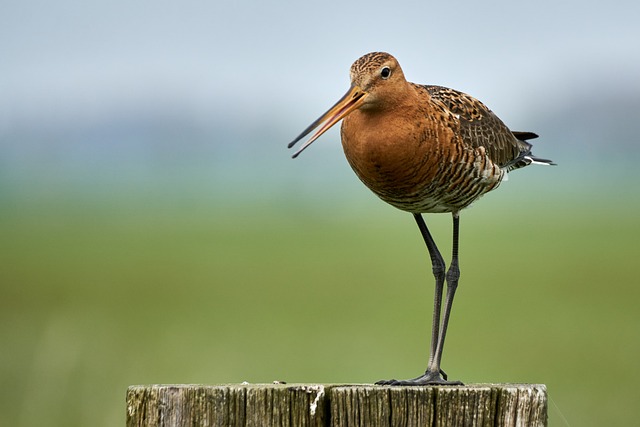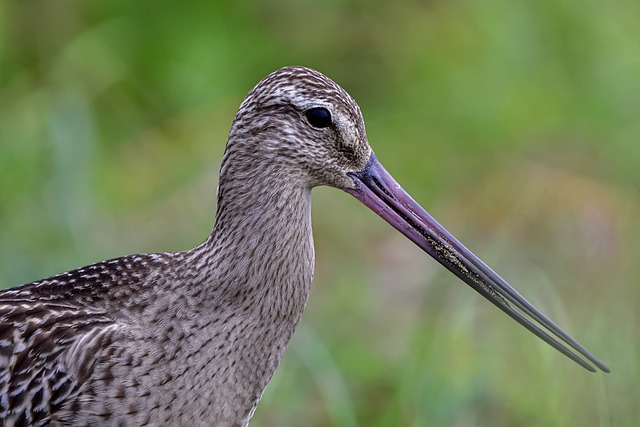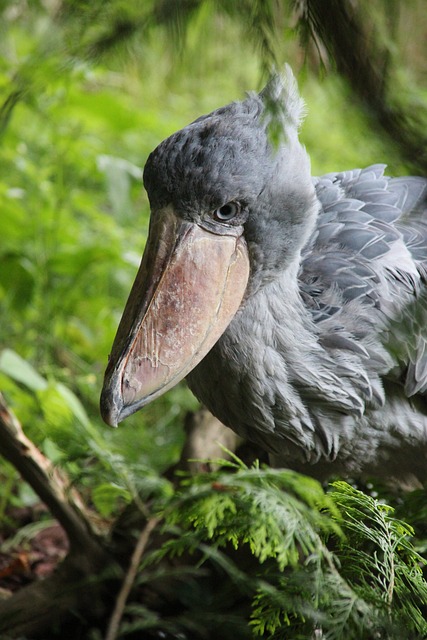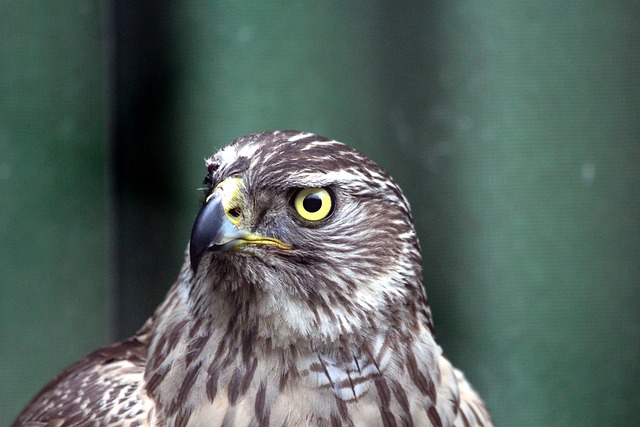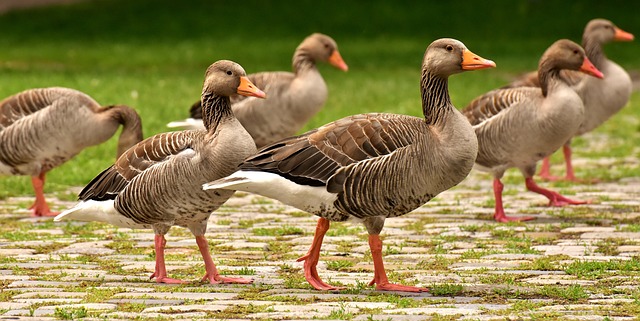The European golden plover is a unique wading bird that is found mainly in the Old World, breeding throughout much of Europe and Asia. It is known for its distinctive golden-brown plumage and its unusual migratory pattern.
This article provides a comprehensive guide to the European golden plover, from its physical features, to its preferred habitat, diet, behavior, and breeding habits. We also provide some interesting facts about the plover to enhance your knowledge of this remarkable creature.
Introduction
The Latin name for the European golden plover is Pluvialis apricaria. The bird is a member of the Charadriidae family, which includes lapwings, dotterels, and other plover species. The gold plover typically grows up to a length of around 25 cm and can weigh up to 80 g. Its plumage is variably golden-brown in color, with white and black markings. The male and female are similar in appearance, and the juvenile bird has a dark brown plumage with barring.
The European golden plover has a wide range, and can be found in habitats ranging from wetlands to grasslands, moors, and even coastal areas. The plover is a migratory species, and will move south in the winter months in search of suitable habitats. It prefers climates that are cool and damp, and can often be found in areas with low temperatures and high rainfall.
The bird’s diet consists largely of insects and other invertebrates, which it finds in the ground or shallow water. It also eats seeds, berries, and other plant matter. The plover typically forages in shallow water or on the ground, using its short bill to probe the ground for food.

The European golden plover is a social bird, and can often be seen in loose flocks of up to several hundred birds. It is shy and wary of humans, and will usually fly away when disturbed. The plover is known to emit loud, distinctive calls during the breeding season, and they are often heard in the early morning or late evening.
The plover is a long-distance migrant, and will fly south in the winter months to warmer climates. It typically travels in large flocks, and can cover distances of up to 1500 km in a single journey. The plover will return to the same breeding grounds in the spring, where it will form pairs and build a nest on the ground.
The European golden plover breeds between April and May, and usually lays 4-5 eggs per clutch. Both parents work together to incubate the eggs, and the chicks are usually ready to leave the nest within two months of hatching.
The European golden plover is an interesting and unique bird, and there are many fun facts to learn about it. For example, the plover is often depicted in European folklore and mythology, and is considered a symbol of luck and perseverance. In some areas, the plover is known as “the golden bird of fortune,” and is thought to bring good luck to those who encounter it. Additionally, the plover is believed to have the power to detect storms and bad weather, and will usually fly away to safety if it senses danger.
In conclusion, the European golden plover is an amazing bird with unique physical features and behaviors. This article provides an overview of the plover’s habitat, diet, behavior, and breeding habits. We also provide some interesting facts about the plover that will help you appreciate its unusual characteristics.
Appearance
The European Golden Plover, or Pluvialis apricaria, is a small migratory bird from the wader family of birds. It has a striking appearance with a golden-brown color on its back, white color on its stomach and cheeks, and black stripes along its wings and tail. The plover has a short pointed bill and roundish head, with a white border around the face and neck.
In terms of size, the European Golden Plover is relatively small compared to other wader birds. It measures 16 to 19 centimeters in length, with a wingspan of 34 to 42 centimeters and a weight of between 60 and 90 grams. It is recognizable by its unique coloring, with the golden-brown patch on its back and white patches on its chest and throat area. The plover also has a unique call that can be heard during its migration.
The European Golden Plover is also known for its distinctive black stripes along its wings and tail, as well as black markings on the sides of its neck. During the breeding season, the plover develops a black cap on its head and a grayish-brown color on its wings and back. The bill and legs are also more prominent during the breeding season, making it easier to identify the plover.
Another unique feature of the European Golden Plover is its long legs. It has long, thin legs that are pale yellow-green in color and can reach up to three times the length of its body. Its feet are also strong and well-adapted for its marshy habitats, providing the bird with the ability to both swim and run quickly over wet terrain.
The European Golden Plover is an impressive bird, with its striking coloration and unique features. It is easily recognizable and can be seen in many parts of Europe during its migratory season. Its size and features make it one of the most recognizable birds in the wader family.
Habitat
The European Golden Plover is a migratory bird that can be found in Europe, parts of Asia, and North Africa. In its summertime breeding areas, it prefers open habitats with short grass like meadows, pastures, wet tundra, and coastal heaths. It typically avoids heavily wooded areas but may be seen in the clearings of forests.
The plover prefers areas with temperatures that are cool and moist. During the winter, its habitat changes to temperate regions with dry, open grasslands. It can also be found in open arable land, moorlands, and marshes.
In the summer, the plover constructs a simple nest in a shallow scrape which is lined by the female. This nest is usually concealed in grass or heather with the eggs having an outer camouflage of brown or grey. The nest is rarely reused and is often abandoned when disturbed.
In the winter, the plover typically forms large flocks. These flocks are made up of hundreds of birds and will often gather in wet grasslands or mudflats.

The European Golden Plover is also highly adaptable and can occupy a variety of habitats. In some cases, they can be found in human-modified habitats such as agricultural fields, airports, and urban parks. In these cases, the plover will feed on worms, seeds, and insects found in these areas.
The European Golden Plover is a migratory species that will travel long distances. During the autumn and winter, they will move from their breeding grounds in the north to more temperate areas in the south. They will then return to their breeding grounds in the spring. This behavior is dependent on the weather and the bird’s food sources.
All in all, the European Golden Plover is a highly adaptable species that can live in a variety of habitats. From grasslands and heaths to agricultural fields and urban parks, the plover is able to thrive in many different environments. This helps them survive and thrive in the wild.
Diet
The European Golden Plover is an omnivorous bird, meaning it eats a wide variety of both plant and animal matter. Its primary diet consists of insects, larvae, worms, mollusks, snails, crustaceans, and small vertebrates like small amphibians, lizards, and even occasional small mammals such as mice. It also feeds on a variety of plant matter, including seeds, grasses, berries, and other fruits.
The plover forages on the ground, walking slowly and stopping to probe for food with its bill. It will also use its bill to flick over leaves and other material to uncover food. It will also occasionally feed on the surface of the water, scooping up insects and small fish. The plover is also known to feed on agricultural crops, which can be a problem for some farmers.
The plover is an opportunistic feeder, meaning it will take advantage of any available food sources. It will also hunt in flocks, using their combined numbers to stir up prey and increase the chances of finding food. During migration, the plover will also feed in large flocks, with hundreds or even thousands of birds gathering in one location to feed.
In addition to its diet of insects and other animal matter, the plover will also feed on a variety of berries, grains, fruits, and other plant matter. This is especially true during the winter months, when food is scarce and the plover must turn to other sources of nourishment.
The plover will also feed on human-provided food sources, such as garbage dumps and discarded food. This can be a problem in some areas, and may lead to the plover becoming a nuisance. To avoid this, it is best to take measures to reduce the availability of human-provided food sources for the plover.
Behavior
The European Golden Plover is a very active bird, with behavior that many birdwatchers enjoy observing. Though they are solitary most of the time, they can also form flocks of up to a few hundred individuals when the winter comes. These flocks gather in food-rich areas and like to feed on the ground.
The Golden Plover is usually a very cautious bird that tends to move away from humans when they get too close. However, they are also known to be quite curious and can even approach humans that don’t move. This behavior is particularly common during the breeding season, when the birds are particularly territorial and protective of their nests.
The Plover is a very vocal bird, making a variety of calls that are distinct and easy to recognize. Their main call is a loud “pee-ooo” and they also use a wide range of other calls for different occasions. They also use calls to communicate with other birds of the same species, and can be heard even in noisy environments or in the presence of other species.
The Plover is a ground nester, and the male can usually be seen skimming over the ground or hovering low while looking for potential nesting spots. Once a nest is found, it is usually lined with grass and feathers from other birds, and the female plover will lay two to five eggs. The male and female will take shifts to incubate the eggs and protect them from predators.
During the breeding season, the Plover can also be observed engaging in courtship displays, with both males and females taking part. These displays involve aerial maneuvers, calls, and posturing. The birds will often call to each other while circling around one another, and will also engage in chases.
The Plover is a migratory bird that spends its winters in warmer climates and moves back to its breeding grounds when the weather gets warmer. This migration often involves long distances and the birds usually form large flocks to make the journey easier. During the migration, the birds will often rest in protected areas before flying on to their next destination.
Migration
The European Golden Plover is known for being a migratory bird. They are a migratory species that can be found around the world, but they mainly migrate between Europe, and Africa or parts of Asia. Every year the plover will leave Europe and migrate to warmer climates in order to escape the cold winter months.
Migration habits of the European Golden Plover are very predictable. The birds usually begin their migration in late August, and will migrate south to spend the winter months in more hospitable climates. During their migration, they will travel over vast distances, often flying up to 1,000 miles in a single day. Once they reach their destination, they will remain in the same place until it is time to return to their breeding grounds in Europe.
European Golden Plovers are known for their reliance on flocking behavior while migrating. The birds will usually form large groups which can be up to several hundred individuals, and will fly in formation during their migration. This helps them to conserve energy and also gives them protection from predators.

The plovers will typically migrate at night, and will often times take short breaks during the day. During their migration, the birds will feed on a variety of different insects, larvae, and small mollusks. They will also use the opportunity to replenish the fat reserves that they have lost from their long journey.
There are many reasons why the European Golden Plover migrates every year. The most common reason is that they need to find warmer climates in order to survive the cold winter months in Europe. Additionally, the birds also migrate in order to find new sources of food and water. Lastly, they may also migrate in order to find new breeding grounds or to join up with other birds to form a larger flock for protection.
Breeding Habits
The European Golden Plover is an interesting species of bird that can be found in certain parts of Europe and Asia. It is known for its unique and beautiful feather patterns, but there is much more to it than just a pretty face. One of the most interesting aspects of its life cycle is its breeding habits.
The European Golden Plover typically breeds between March and May. During this time, the males will establish territories and attract a mate with their distinctive song. They are monogamous and will stay together until the end of the nesting season.
The plover usually builds its nests on the ground, typically in open areas. Its nest is made of grass or moss and is usually lined with feathers. The female will lay between four and six eggs, which are a drab color to help them blend in with their surroundings. The eggs will then hatch after about three weeks.
The chicks are born with a thick layer of downy feathers and are able to move around almost immediately. The parents will take turns watching over the chicks and protecting them from potential predators. The chicks will stay in the nest for about three weeks and then fledge when they are able to fly.
The parents will continue to feed their young until they are able to fend for themselves. After they have fledged, the chicks will typically stay with their parents for a few months before heading off on their own.
The European Golden Plover is an interesting species of bird, and its breeding habits are an important part of its life cycle. Its monogamous behavior, unique nesting habits, and protective parenting are all features that make the plover an interesting species to observe.
Fun Facts
The European Golden Plover is a fascinating creature with a number of interesting characteristics that set it apart from other birds. One of the most fascinating aspects of this species is the fact that it is one of the longest-distance migrants in the avian world. Every year, the bird migrates from its breeding grounds in northern Russia, Scandinavia, and the Baltic region to its wintering grounds in sub-Saharan Africa.
Despite its small size, the European Golden Plover is also quite resilient and has been recorded flying at altitudes of up to 5,000 feet! This allows it to take advantage of favorable winds and migrate with ease. During its long journeys, the Plover typically stops to rest at various points along the way, such as the Mediterranean Sea, the Sahara Desert, and the Arabian Peninsula.
The European Golden Plover is also distinguished by its bright yellow plumage. Its feathers are a striking combination of black, white, and yellow, which serves as a form of camouflage against the backdrop of its surroundings. This allows it to remain hidden and protected from potential predators.
In terms of diet, the Plover is omnivorous and feeds on a variety of items. It primarily eats insects and other invertebrates, but it will also feed on small mammals, frogs, eggs, and other forms of vegetation. The Plover also has a unique feeding behavior, whereby it will “run and stop” to pick up food.
Finally, the European Golden Plover is one of the few birds that is represented in a number of cultures and traditions. In Ireland, for example, it is believed that the Golden Plover’s call can represent the coming of summer. In other parts of Europe, the bird is seen as a sign of good luck and fortune. Furthermore, the Plover is sometimes featured in folklore and traditional songs.
Clearly, the European Golden Plover is a remarkable species with a number of unique features and behaviors. Its bright plumage and stunning migration patterns make it a truly spectacular creature to behold. With its resilience and unique diet, it is no wonder that this species has been celebrated and admired by people from all corners of the world.


